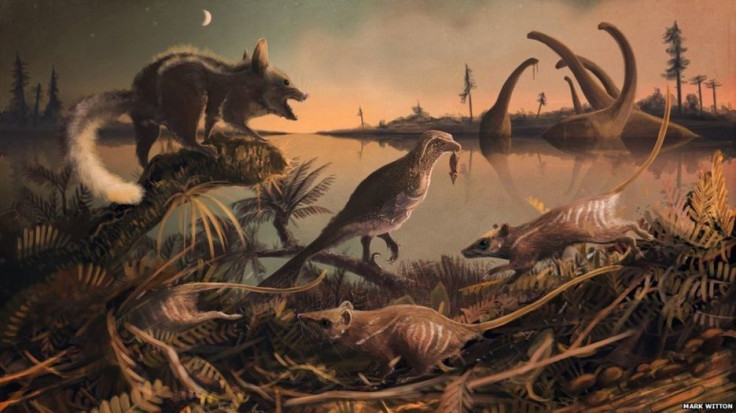Fossils Show Earliest Human Ancestors Looked Like Rats

Humans are just highly evolved rats, according to fossils of the oldest known mammals in our species’ family line.
Scientists have discovered the remains of animals from 145 million years ago that are some of the earliest human ancestors, and they look like they would eat your garbage. They come from two extinct species that later evolved into most of the mammals on the planet today and probably looked like rats, given what the team learned by investigating the fossils.
The researchers were working with teeth from the prehistoric mammals that were dug up in Dorset, on England’s southern coast, according to their study in the journal Acta Palaeontologica Polonica. Those choppers have been dated to the time when the Jurassic period was turning over into the Cretaceous, at the height of the dinosaur reign. Based on their age, the authors refer to the fossils as the earliest confirmed ones on the evolutionary line that led to humans.
These rat-like creatures, from a group called eutherian mammals or placental mammals, would also have been the ancestors of most mammals in the world, including those that are starkly different from us, like baleen whales, and our closest friends, dogs and cats.
Marsupials are an example of the small club of mammals that are not within this line.
According to the University of Portsmouth, the prehistoric mammals were probably “small, furry creatures and most likely nocturnal.” They may have made their home bases by burrowing into the ground and could have eaten insects and plants.
“The teeth are of a highly advanced type that can pierce, cut and crush food,” researcher Steve Sweetman said in the university statement. “They are also very worn, which suggests the animals to which they belonged lived to a good age for their species. No mean feat when you’re sharing your habitat with predatory dinosaurs.”
Sweetman also said that the teeth resemble what has been found from animals in the end of the Cretaceous period, which means they might have been fairly ahead of their time.
The teeth are small and represent just one part of an animal’s body, but tooth shape reveals a lot about the physical makeup and diet of a creature.
“Every mammal has a different set of teeth … and you can tell from a single tooth exactly where in the jaw it goes,” researcher Dave Martill said in a video from the university. “And the pattern of the teeth, the pattern of all these little cusps, tell you exactly what the animal was eating as well. So they are by far the most important fossils that we can find.”
The study notes that there is another specimen that appears to be a human mammalian ancestor from earlier in the Jurassic period, around 160 million years ago, making it older than the teeth the authors describe, but that discovery has been disputed. Still, if the teeth from our rat-like ancestors are the oldest in our evolutionary line, it could give experts a better idea when our line emerged and diverged into different branches.
© Copyright IBTimes 2024. All rights reserved.





















